Set seductively between mountains and the sea, Cape Town flaunts its natural beauty with pride. Rising above the city, iconic Table Mountain provides the perfect plateau for panoramic views that stretch to the glittering Atlantic, botanical gardens beckon from its slopes, and the city's long blonde beaches backed by towering peaks are some of South Africa's best. Bubbling beneath the surface is an irrepressible sense of adventure, and travelers can join in the fun with a range of outdoor activities, from hiking, biking, surfing, and paragliding to whale-watching trips and cage dives with great white sharks.
As the oldest European settlement in Africa, Cape Town has a rich and, at times, turbulent past. At Robben Island, history buffs can see where Mandela was incarcerated for 18 years. In the hinterland, elegant Stellenbosch is a Nirvana for foodies. Along the rugged coast, scenic drives slice into mountains that plunge to the sea, penguins waddle on pristine beaches, and Cape Point is part of a UNESCO World Heritage Site with one of the richest floral kingdoms in the world.
1 Table Mountain

Rising 1,087 meters south of the city center, flat-topped Table Mountain is the most photographed landmark in South Africa and a constant reminder that nature is queen in this stunning seaside city. Built from massive beds of sandstone and slate, the mountain forms the northern end of the Cape Peninsula and lies within Table Mountain National Park.The park protects an astounding diversity of plants and more than 1,470 flower species - the planet's richest floral kingdom - as well as animals such as cute snub-nosed dassies (rock hyraxes), caracals, and baboons. Within the park, Devil's Peak flanks the mountain on the east, and Lion's Head on the west, while the crags known as the Twelve Apostlesloom over the beach resorts on the Atlantic coast.
A layer of clouds, called the "tablecloth" frequently cloaks the mountain's peak, but when the clouds clear, visitors can enjoy spectacular views of Cape Town and the entire Cape Peninsula from the summit. Bring a sweater as it can be cold and windy at the top. For those short on time, and energy, a revolving cableway climbs to the summit, covering the distance of 1,244 meters in seven minutes. The cableway runs daily - except in high winds, so it's a good idea to check the website or call for current conditions before heading out. Also to avoid long lines, try booking tickets online. At the upper station of the cableway, a café features a small viewing terrace and serves as the starting-point of three short walks, which highlight the gigantic scale of the landscape. Those wishing to summit the mountain on foot can choose between more than 350 different routes varying in difficulty. Depending on the starting-point, the climb takes between two to four hours. For superb views of Table Mountain and the best vantage point to photograph this iconic landmark, hike or drive up Signal Hill or Lion's Head - both offer stunning views from their summits.
Official site: http://www.tablemountain.net
Accommodation: Where to Stay in Cape Town- TripAdvisor.com
2 Kirstenbosch National Botanical Gardens
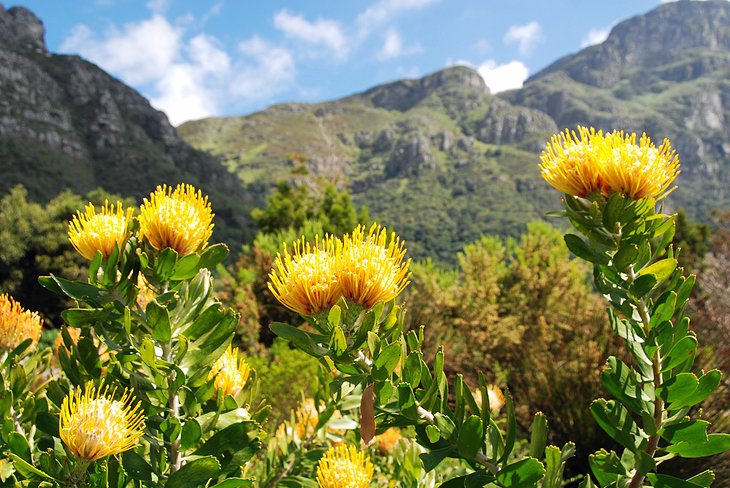
In a beautiful setting on the eastern slopes of Table Mountain, Kirstenbosch Botanical Gardens are part of the Cape Floristic Region UNESCO World Heritage site. The site was bequeathed to the state by Cecil Rhodes in 1902 and the gardens were established in 1913 to preserve the country's indigenous flora - one of the first botanical gardens in the world with this mission. More than 20,000 native South African plant species are collected, grown, and studied in the hilly 528-hectare nature reserve of indigenous forest and fynbos. Of particular historical interest are a hedge of wild almond-trees planted by Jan van Riebeeck in 1660 and an avenue of camphor and fig trees planted by Cecil Rhodes in 1898. The flowers, shrubs, and trees are arranged so that a show of blossoms and color brightens the gardens throughout the year. Don't miss the proteas, the scented garden; the impressive collection of cycads; the Sculpture Garden, and the Botanical Society Conservatory, a custom-built greenhouse with plants from arid regions. Well-marked trails thread through the wooded slopes, and the Tree Canopy Walkway provides panoramic views across the mountain-backed gardens. One of the trails leads through a ravine to the summit of Table Mountain. In summer, the gardens make an evocative venue for outdoor concerts.
Green thumbs and garden lovers should also visitCompany's Garden, an oasis of exotic trees, flowers, aviaries, and ponds in the heart of the city. While here, visitors can also explore the Iziko South African Museum and Planetarium and the Iziko National Gallery.
Address: Rhodes Drive, Newlands, Cape Town
Official site: http://www.sanbi.org/gardens/kirstenbosch
3 Signal Hill and the Noon Gun
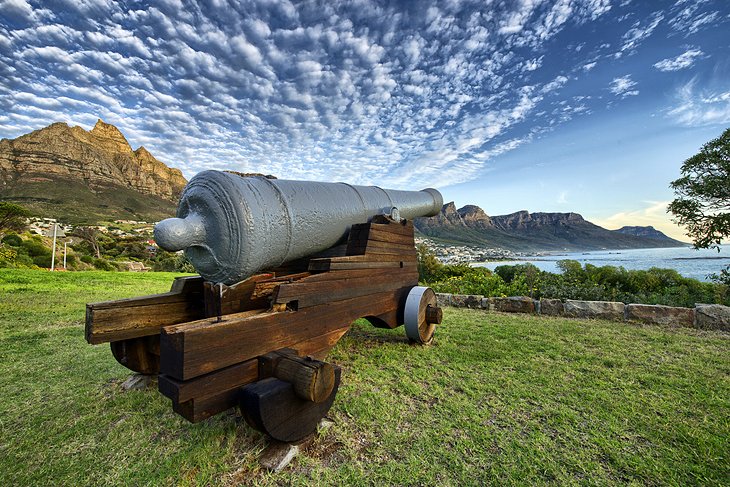
Five minutes' drive west of the city center, Signal Hill offers stunning views over Cape Town, Table Bay, and the glittering Atlantic Ocean from its 350-meter summit. The hill forms the body of the adjacent Lion's Head peak and was named for its historical use when signal flags were flown from here to send messages to approaching ships. Many locals and visitors drive up to watch the sunset and stay to see the shimmering lights of Cape Town ignite after dark. At noon every day (except Sundays and public holidays), a cannon activated by an electronic impulse from the Observatory fires a single shot. In earlier days this "noon gun" served to give the exact time to ships anchored in the bay. Tourists are welcome to attend a free presentation on the history of the Noon Gun at the Lion Battery and then stay to watch the firing. Those headed to the top of the hill for sunset views should take a jacket as it can be chilly after the sun dips. On busy weekends and holidays go early to score a parking spot.
4 Clifton and Camps Bay Beaches
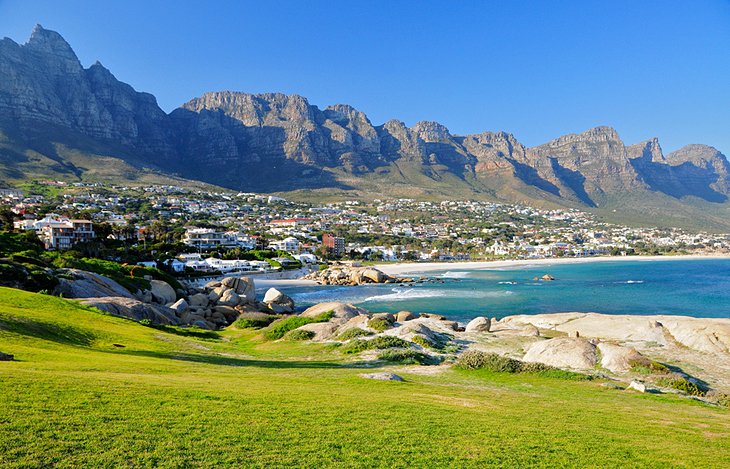
About six kilometers from the city center, the beaches of Camps Bay and Clifton lure the buff, the bronzed, and the beautiful - as well as the big bucks. At Clifton, Cape Town'sSt. Tropez, some of the city's priciest real estate overlooks four gleaming white-sand beaches flanked by smooth granite boulders and washed by sparkling, but crisp, blue seas. First Beach is a favorite volleyball venue and offers decent surf when the conditions are right. Just south of Clifton, trendy Camp's Bay sports another stunning beach, backed by the magnificent Twelve Apostles and the distinctive peak of Lion's Head. People-watching is an art along this pretty palm-lined stretch as well as at the chic cafes and boutiques fringing Victoria Street - especially during weekends and holidays when locals and tourists throng here to soak up the scene. Camp's Bay and Clifton'sFourth Beach boast coveted Blue Flag status awarded for clean water, safety, and environmental management making them a great choice for families as well.
5 The Victoria & Alfred Waterfront
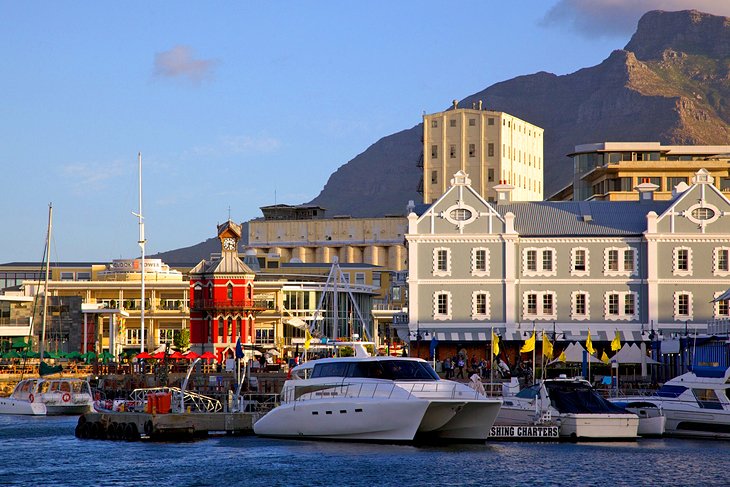
Stretching around two harbor basins, the Victoria and Alfred Waterfront is a buzzing entertainment quarter reminiscent of Fisherman's Wharf in San Francisco. Once a scruffy fishing harbor, this reimagined waterfront district is now one of the city's top tourist attractions, and many of the old buildings have been preserved and restored. Millions of visitors a year flock here to the shops, jazz venues, restaurants, hotels, theaters, drama school, cinemas, and museums. Sports fans will love the Springbok Experience Rugby Museum, which traces the story of South African Rugby through interactive exhibits. Two Oceans Aquarium features more than 300 species of fish from the Atlantic and Indian oceans, in particular from the area around the Cape of Good Hope. Highlights include a touch tank, penguin encounter, predator exhibit, and diving experiences, which allow visitors to view fascinating marine creatures up close. Trips to Robben Island leave from the Nelson Mandela Gateway on the waterfront, but anyone is welcome to explore the museum exhibits here. West of the waterfront, the trendy Green Pointprecinct is also home to the lovely Green Point Urban Parkwith its biodiversity garden as well as the Cape Town Stadium, which hosted many FIFA World Cup matches in 2010.
Address: 19 Dock Road, V&A Waterfront, Cape Town
Official site: http://www.waterfront.co.za
6 Editor's PickChapman's Peak Drive
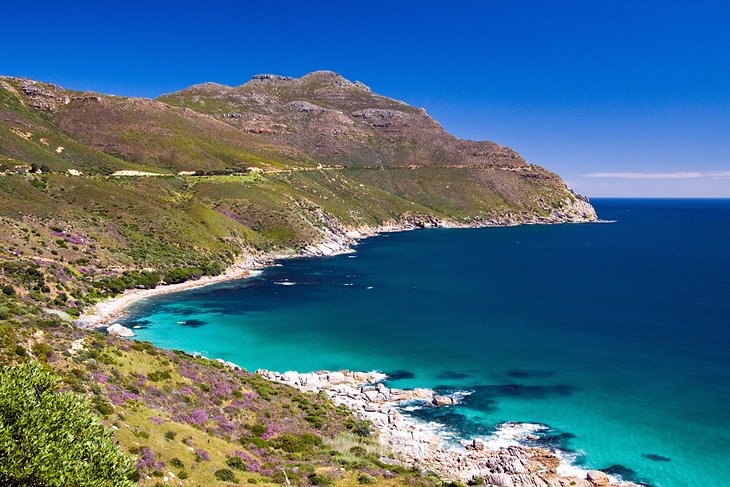
About 25 kilometers from the city center, Chapman's Peak Drive, affectionately called "Chappies" by the locals, is one of the most jaw-dropping driving routes in the world. Cut into the sheer face of Chapman's Peak, which plunges to the sea, this spectacular toll road snakes its way for about nine kilometers between Noordhoek and Hout Bay passing panoramic Chapman's Peak point along the way. With 114 curves carved into the rock face, some perched more than 500 meters above the sea, this is not a route for those prone to motion sickness. Around sunset, cars cram along the panoramic viewpoints as sightseers stake a spot to watch the sun sink while sipping a cool drink in the time-honored South African tradition known as "sundowners." Look for southern right whales and dolphins in the sparkling Atlantic Ocean below, and drive slowly and carefully. The road was closed on and off for several years due to rockfall dangers, but it has now been stabilized and is open every day - except during severe weather events. As well as being used as a location for TV commercials, Chapman's Peak Drive is the setting for the popular Cape Argus Cycle Race and Two Oceans Marathon. After admiring the magnificent sea views, hungry travelers can feast on fresh fish at one of the excellent seafood restaurants in Hout Bay.
7 Robben Island
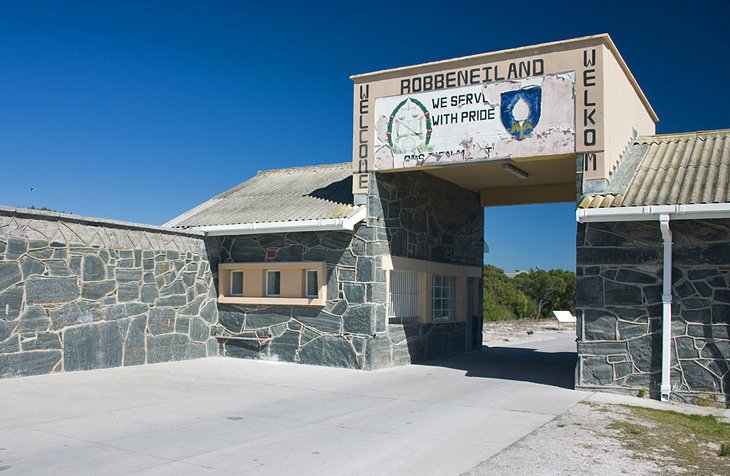
For nearly 400 years, Robben Island in Table Bay, was a brutal prison where Nelson Mandela spent 18 years in a tiny cell during the apartheid era. Today, the island is a UNESCO World Heritage Site and a must-see attraction for anyone interested in South African history. Tours to the island begin with multimedia exhibits in the museum at the Nelson Mandela Gateway on the Victoria and Alfred Waterfrontbefore travelers board vessels to the island. The boat trip takes about 30 minutes to an hour depending on weather conditions and can be rough during big swells. While on the island, visitors tour the maximum security prison, Mandela's former cell, and the lime quarry where prisoners were forced to endure back-breaking labor. Perhaps the best part about the tour is that the guides are former prisoners of Robben Island who share their experiences and offer insight into the atrocities of apartheid and the power of forgiveness. After leaving this hellish six-square-kilometer island, Mandela said, "As I walked out the door toward the gate that would lead to my freedom, I knew if I didn't leave my bitterness and hatred behind, I'd still be in prison." These wise words are even more potent after a tour here. Book well in advance.
Official site: http://www.robben-island.org.za/
8 Great White Shark Cage Dives
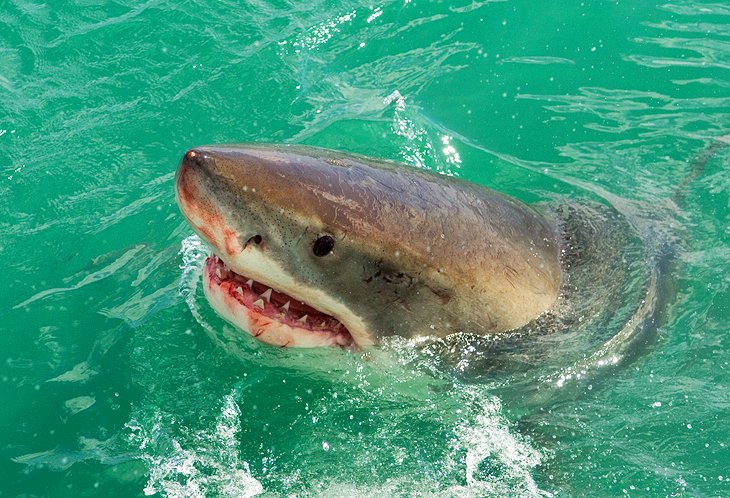
In the chilly waters off Cape Town's coast, thrill seekers can come face-to-face with one of the ocean's most feared predators: great white sharks. Protected by the thick bars of an iron cage, divers score a hefty dose of adrenaline as these magnificent creatures swim within inches of the bars. Tour operators in Cape Town offer shark cage dives in areas such as Simon's Town, Dyer Island, Mossel Bay, Seal Island, and Gansbaai, the "Great White Shark Capital of the World." The best time to see these magnificent creatures is between April and October. No diving certification is needed since divers are enclosed in the custom-built cages, and part of the funds go towards shark research and conservation. Those who prefer to appreciate these awe-inspiring creatures from a distance can watch all the excitement from the boat. Seal, dolphin, penguin, and whale-watching tours are also available for more timid animal lovers.
9 City Hall & the Castle of Good Hope
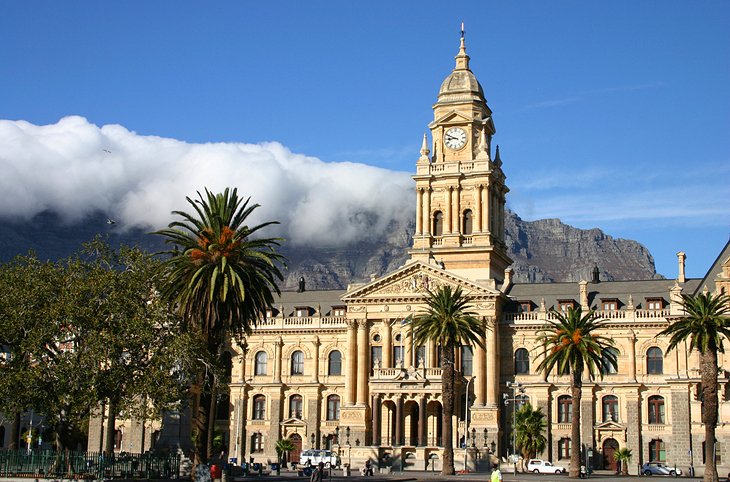
History buffs can visit two notable historic buildings within five minutes' walk of each other in central Cape Town. Built in 1905, Cape Town City Hall is a striking mix of Italian Neo-Renaissance and British colonial style. The 60-meter-high bell-tower, with a carillon installed in 1923, was modeled on Big Ben in London. Highlights of the interior include the beautiful mosaic floors, marble staircase, and impressive stained glass. Notice the balcony overlooking Grand Paradewhere Nelson Mandela, the country's future president, addressed a jubilant crowd in 1990 after 27 years in prison. Music lovers should also try to attend a performance by theCape Philharmonic Orchestra based here.
Across the road from the Grand Parade, The Castle of Good Hope is the oldest surviving stone building in South Africa. It was built in 1666-79 as the residence of the Governor and for the protection of the early settlers, but the castle, which is in the form of a five-pointed star,was never exposed to attack. A highlight here is the William Fehr Collection, which includes pictures, porcelain, fine glass, ceramics, and furniture of the 17th to 19th centuries from South Africa, Europe, and Asia.
10 The Heart of Cape Town Museum
In the Groote Schuur Hospital, The Heart of Cape Town Museum opened in 2007 to honor the 40th anniversary of the first heart transplant performed here by Christiaan Barnard. Knowledgeable docents take visitors on a fascinating two-hour tour to see recreations of the operating facilities in the actual rooms where the surgery took place. The tours also explore everything from the ethical implications of the time to the history of the recipient and the donor. Even visitors with no medical background appreciate learning about the history of this life-saving procedure.
Official site: http://www.heartofcapetown.co.za/
11 Iziko Museums of South Africa
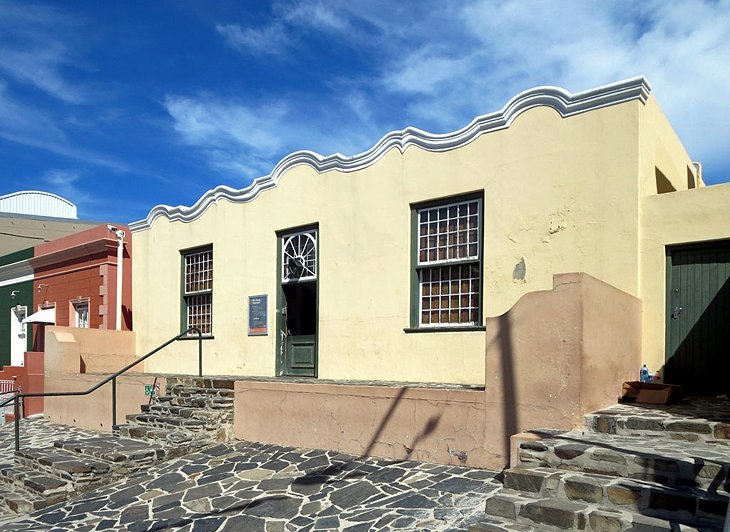
Iziko Museums of South Africa comprises 11 museums governed by a council appointed by the Minister of Arts and Culture. A top museum in this group is the Bo-Kaap Museumin the Bo-Kaap District, an old Malay quarter with brightly-painted two-story houses that are still occupied by the descendants of slaves who were brought to the Cape from the East Indies in the second half of the 17th century. This excellent museum illustrates aspects of 19th-century Muslim life in a rare early Cape-Dutch house circa 1763. A room on the premises houses a collection of carts and carriages.
The Old Town House is another popular attraction in the museum group. It was originally built in 1755 in a Dutch-Rococo style and lies in Cape Town's hub on the west side of Green Market Square. Formerly Cape Town's City Hall, the Old Town House now displays a collection of pictures presented to the country by Sir Max Michaelis in 1914, consisting mainly of works by 17th-century Dutch and Flemish masters, including Frans Hals, Jan Steen, Jacob van Ruysdael, and Jan van Goyen.
Another highlight of the group is the Koopmans-de Wet House, built in 1701 on a U-shaped ground-plan, with a façade by Louis Thibault (1771). The original interior has been preserved and gives a vivid impression of the lifestyle of a successful 18th-century businessman. Also in the group, theSouth African Museum and Planetarium and the National Gallery, in Company's Garden, are worth a visit for natural history buffs and budding astronomers.
Official site: http://www.iziko.org.za
12 The District Six Museum
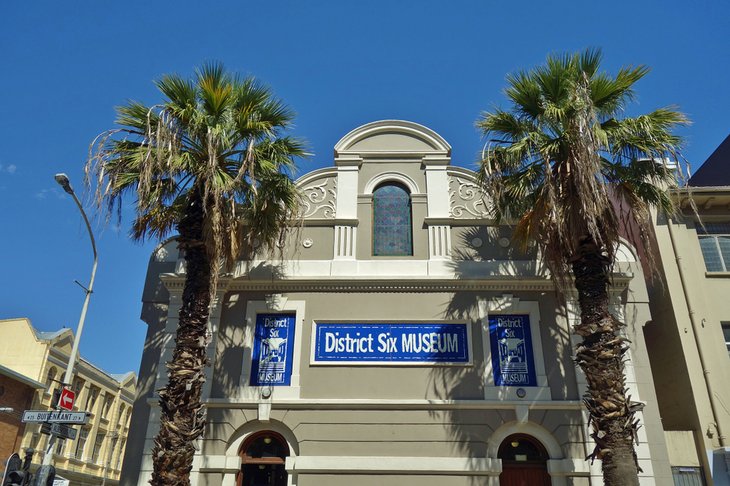
In 1966, 70,000 residents of multi-ethnic District Six were displaced when the South African government decided the community was to be a white one. This poignant museum honors the people of this now-vanished district. On the museum's floor is a large-scale map where former residents are encouraged to label their old homes and features of their neighborhood.
Address: 25A Buitenkant Street, Cape Town
Day Trips from Cape Town
Penguins at Boulders Bay
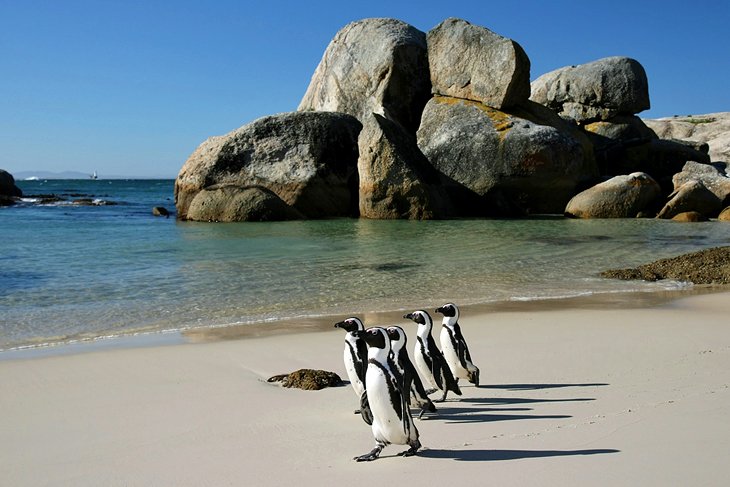
Penguins are adorable in any setting, but seeing them waddle around in their natural environment is a particular thrill for wildlife lovers. About an hour's drive from Cape Town, Boulder's Bay in Simon's Town shelters a breeding colony of more than 2,000 endangered African Penguins. This beautiful wind-sheltered, white-sand beach belongs to the Table mountain National Park Marine Protected Area, and the park charges an entrance fee to access these shores. But it's worth it. Visitors can enjoy close-up encounters with these charismatic creatures, all in a stunning setting with giant granite boulders, rock pools, calm bays, and blissfully uncrowded patches of gleaming sand. A short walk from here, Foxy Beach is also great for viewing the penguins with a walkway that leads past the prime sites. This is a fantastic family-friendly excursion for animal lovers and beach lovers alike.
Cape Point
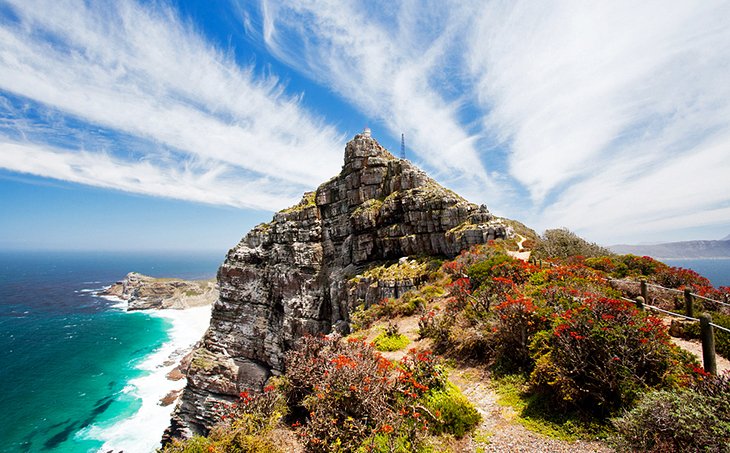
About 60 kilometers from Cape Town, Cape Point lies within the southernmost tip of Table Mountains National Park and is part of the Cape Floral Region, a UNESCO World Heritage Site and one of the richest areas of flora in the world. The scenic drive from Cape Town along the Cape Peninsula takes travelers past the surf breaks of Muizenberg, and the pretty seaside town of Kalk Bay, as well as the prime-penguin-viewing beaches at Simon's Town. Wildlife is also diverse on this soaring seacliff. About 250 species of birds are found here as well as eland, Cape zebra, reptiles, and troops of brazen baboons. Visitors can enjoy the view from the Cape Point lighthouse by taking the Flying Dutchman funicular or hiking up the many stairs to the top. Other activities include whale watching, shipwreck spotting from the beach, and nature walks. For a twist on this eye-popping seaside scenery on the return trip, drive along the 114 bends of Chapman's Peak drive, and stop for a succulent seafood feast at Hout Bay or Noordhoek. Cape Point is the most southwesterly tip of Africa, not to be confused with Cape Agulhas, about 150 kilometers away, which is the most southerly tip of the continent where the currents of the two oceans - the Indian and the Atlantic - meet.
Whale Watching at Hermanus
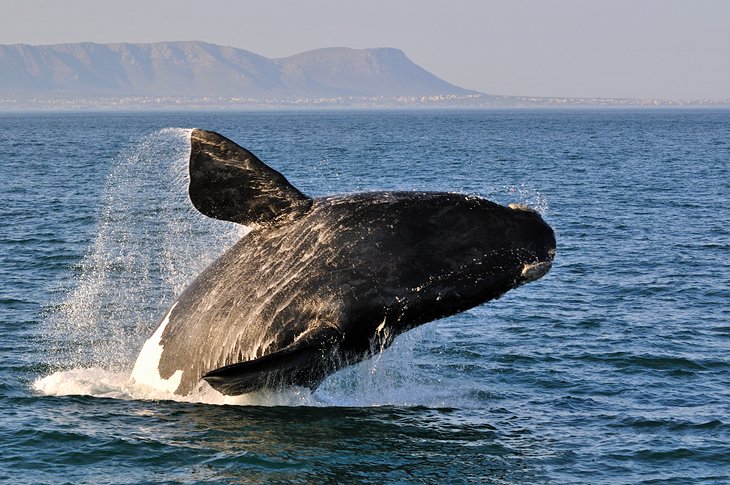
About 120 kilometers east of Cape Town, Hermanus is one of the world's whale-watching hotspots. From July through November, large numbers of southern right whales migrate through these waters, and visitors can even spot them from shore - especially during the prime months of September, October, and November. On foot, the best places to see these magnificent creatures are from the 12-kilometer-longCliff Path, the Old Harbour viewing terraces, and Sievers Point. Alternatively, sightseers can join a guided sea kayak trip, hop aboard one of the popular whale-watching cruises, or enjoy a scenic flight for a bird's eye view. Hermanus celebrates these magnificent creatures with an annual whale festival in September, and the town is also popular for its beautiful beaches and many water sports, including fishing, swimming, and shark cage diving.
Stellenbosch: A Foodie's Dream
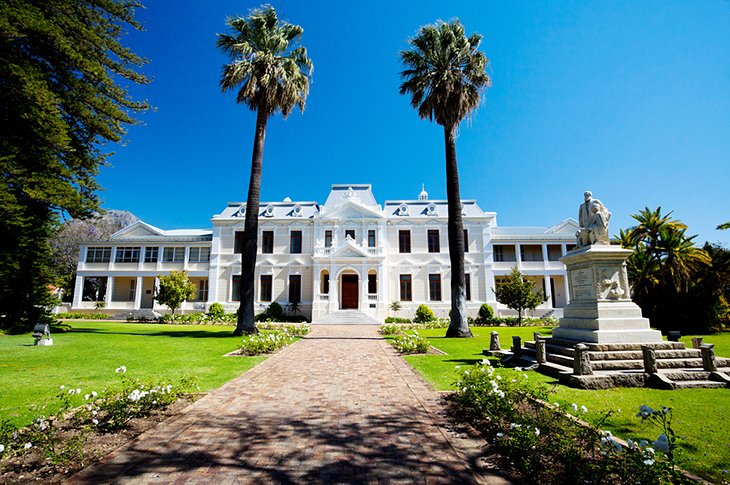
About 53 kilometers east of Cape Town, Stellenbosch is one of South Africa's prettiest towns. Elegant Cape Dutch estates rise amid a patchwork of vine-cloaked fields and ancient oaks backed by mountains. This lively university town resides in a picturesque valley, and its fertile soils nurture some of the country's best produce, which the town showcases at its acclaimed restaurants, atmospheric alfresco cafes, and popular markets. To soak up some of the region's history, visit the Village Museum, a group of four restored houses and gardens dating from 1709 to 1850. Rupert Museum spotlights works by South African artists, and theBotanic Garden at the University of Stellenbosch is a lovely spot to stroll and relax with an organic tea at the cafe. Outdoor adventures await in the beautiful Jonkershoek Nature Reserve where nature lovers can hike and bike on the wilderness trails. North of Stellenbosch, Paarl also boasts beautiful scenery and a rich agricultural heritage, while the charming town of Franschhoek, about 35 minutes from Stellenbosch, is known as South Africa's culinary capital. Closer to Cape Town, the Constantia Valley is another hotspot for foodies.
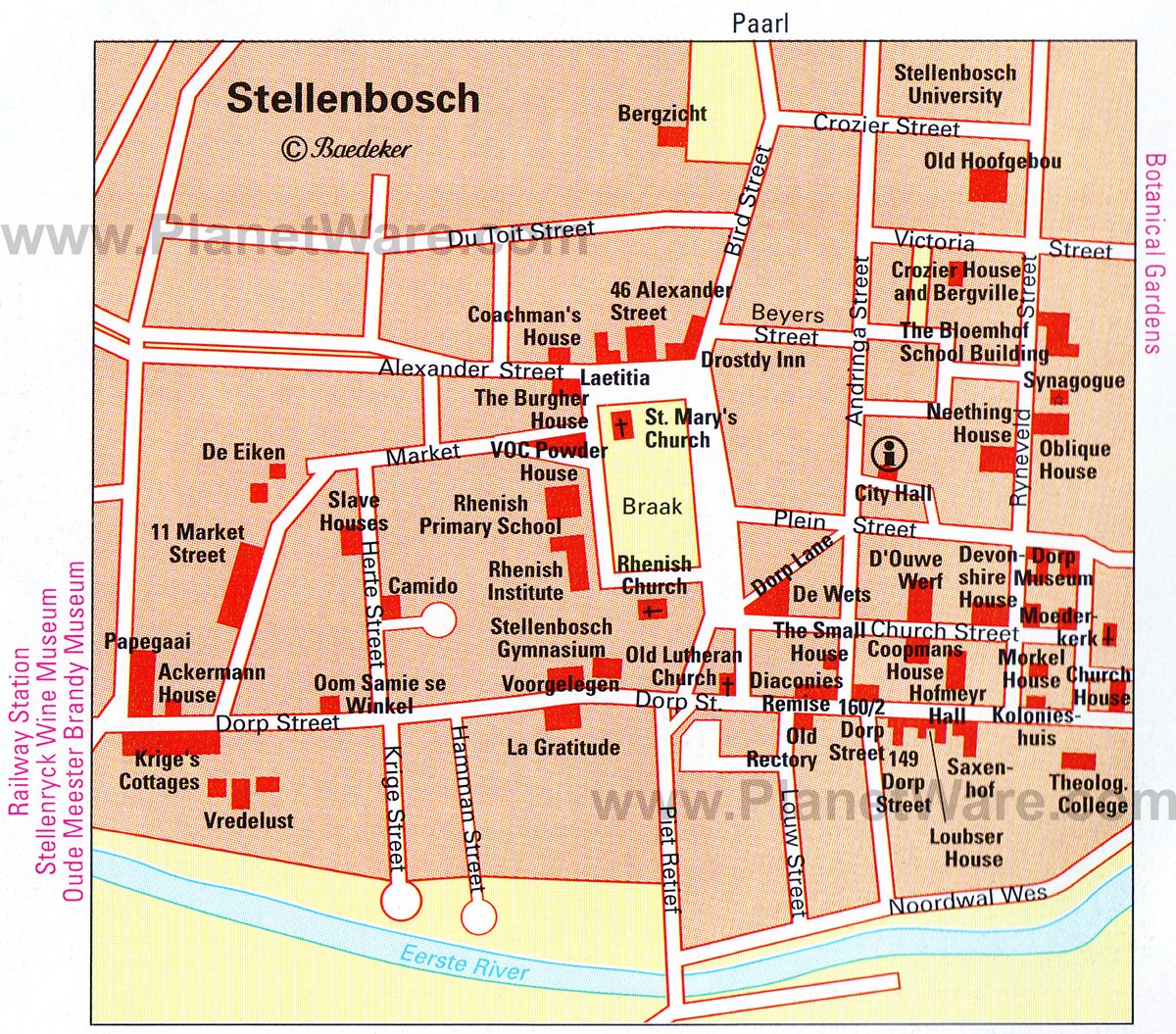 Stellenbosch Map - Attractions
Stellenbosch Map - Attractions
No comments:
Post a Comment